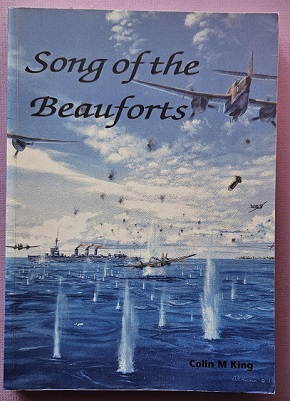Description
Title: Fighter Nights – 456 Squadron RAAF
Author: Bennett, John William
Condition: Near Mint
Edition: 1st Edition
Publication Date: 1995
ISBN: 1875593101
Cover: Hard Cover with Dust Jacket – 214 pages
Comments: The comprehensive history of RAAF No. 456 Squadron during World War 2.
No. 456 Squadron was the Royal Australian Air Force’s only dedicated night fighter squadron during the Second World War. An Article XV squadron, it was formed at Valley, on the Welsh island of Anglesea, on 30 June 1941 and joined 9 Group of Fighter Command. The squadron was initially equipped with Boulton Paul Defiant aircraft but had barely begun operations before it was re-equipped with Bristol Beaufighters at the end of September. Obsolete, the Defiant was ill-suited to the night fighter role, but operating the potent radar-equipped Beaufighter, the squadron was well-equipped for stalking German bombers in Britain’s night skies.
The squadron operated Beaufighters from Valley for a little over a year before it was re-equipped with De Havilland Mosquitoes in December 1942. The Mosquito was even more versatile and its introduction, combined with a lessening of the German air threat over Britian, led to a diversification of 456 Squadron’s activities. From the start of 1943 it was also employed on offensive patrols over occupied Europe, striking at both German bombers near their home airfields and at targets on the ground. On 30 March 1943 the squadron relocated to Middle Whallop, in Hampshire to the east of Salisbury.
Although the night skies remained the squadron’s principal domain, it also mounted operations in daylight, attacking trains and other enemy transport in France, and flying patrols in defence of Coastal Command aircraft operating over the Bay of Biscay.
On 17 August 1943 the squadron moved to Colerne, to the east of Bristol. The move marked the beginning of a lull in operations in which the squadron’s energies were devoted to training. On 17 November it again moved, to Fairwood Common, in south Wales and mounted patrols in support of Bomber Command’s operations over Germany.
At the end of February 1944 a German “mini-blitz” on London and other targets in southern England resulted in 456 Squadron being redeployed to strengthen the defences there. It joined 11 Group at Ford, south east of London, and operated in its primary role against German bombers. The German campaign petered out at the end of May, just in time for 456 Squadron’s efforts to be diverted to protect the Allied landings in Normandy that began on 6 June. Later that month, the squadron returned to the air defence of Britain, mounting patrols to intercept V1 flying bombs.
The air threat to Britain, in all its forms, had receded by the start of 1945, and 456 Squadron, after a period of training at Church Fenton, was redeployed to Bradwell Bay in south east England to provide patrols in defence of Bomber Command aircraft. When not required in this role, the squadron mounted its own strikes against ground targets. 456 Squadron launched its last operational sorties of the Second World War on the night of 3 May 1945 but these were aborted due to bad weather. After the Armistice on 8 May, the squadron was employed to enforce the surrender of the German garrisons on the Channel Islands and on reconnaissance missions over Germany. It disbanded on 15 June 1945 having shot down 42 enemy aircraft and 29 V-1 flying bombs during the war. The bulk of 456 Squadron’s personnel sailed for home on 19 October 1945.
Includes: honour roll, honours and awards, squadron chronology, aircraft serial numbers and their fate, claims against German aircraft, and claims against V1 flying bombs.




